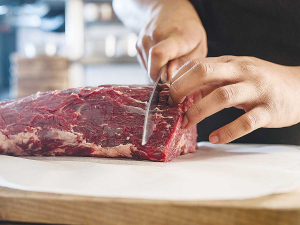Santa's present for the primary sector - an FTA with India
Primary sector leaders have welcomed the announcement of a Free Trade Agreement between India and New Zealand.
 NZ's meat exports to the United States grew by 50% during the three months from July to September 2020 compared with the same period last year.
NZ's meat exports to the United States grew by 50% during the three months from July to September 2020 compared with the same period last year.
New Zealand's red meat sector exports to the United States grew by 50% during the three months from July to September this year compared to a year earlier.
The Meat Industry Association (MIA) says the lift in exports to the US helped stem the flow of the decline to China, which were down by 25% for the same period compared in 2019.
These figures come from MIA’s recently released third quarter report, which show that overall meat exports for the year ended September 2020 were up 8% to $9.39 billion compared the same period last year.
Total meat exports to the US reached $400 million for the July-September quarter, followed by a 42% rise to the UK ($71m). Germany saw a 25% increase to $70m.
MIA says this offset the 25% decline in exports to China ($530m), although the value of sheepmeat and beef exports to that country remains at an historically high level. Overall, exports in the third quarter earned $1.69 billion, unchanged from the same period in 2019.
For the year ending September 2020, the value of NZ meat exports in nearly all of our top 10 markets (except the Netherlands) increased.
However, the report shows that in September, overall red meat exports were worth $501 million – down 6% from September 2019.
MIA says exports to both China and Japan were down. However, there were increases to United States, Germany and UK. Meanwhile, sheepmeat exports to the US, Germany and the UK rose, as did beef exports to the US and Canada.
Chief executive Sirma Karapeeva says this is a positive outcome, especially given the volatility and impact of Covid-19 on world markets.
“There has been some shift from chilled to frozen product for sheepmeat as the industry pivoted away from the challenging food service sector into retail and e-commerce,” she explains.
“There was also some re-balancing to other markets from the record levels that were going to China last year. This demonstrates the industry’s ability to adjust product specifications and destinations to meet the demand from our global markets.”
Karapeeva says there are indications that demand in China will continue to increase and we anticipate strong buying patterns as it prepares for the Chinese New Year celebrations next year.
“The red meat processing and exporting sector has been a real success story during the Covid-19 crisis and continues to generate crucial export revenue for the country when other sectors are facing significant headwinds,” she adds.
“However, we cannot be complacent. We are yet to see the full economic and social impact of Covid-19. With the UK, Europe and parts of the US going into a second lockdown, we can expect further disruptions in our global markets.”
Karapeeva adds that the industry is also concerned about potential disruptions to shipping lines from Europe, the impact of the last drought in New Zealand and the prospect of extreme dry conditions in the coming months.
“This means the uncertainty and volatility will continue for some time.”
A New Zealand dairy industry leader believes the free trade deal announced with India delivers wins for the sector.
The Coalition Government will need the support of at least one opposition party to ratify the free trade deal with India.
Primary sector leaders have welcomed the announcement of a Free Trade Agreement between India and New Zealand.
At Pāmu’s Kepler Farm in Manapouri, mating has wrapped up at the across-breed Beef Progeny Test.
More than 150 people turned up at Parliament recently to celebrate the 20th anniversary of Horticulture New Zealand (HortNZ).
Biosecurity New Zealand says Kiwis should continue to keep an eye out for yellow-legged hornets (Vespa velutina) over the holiday season.